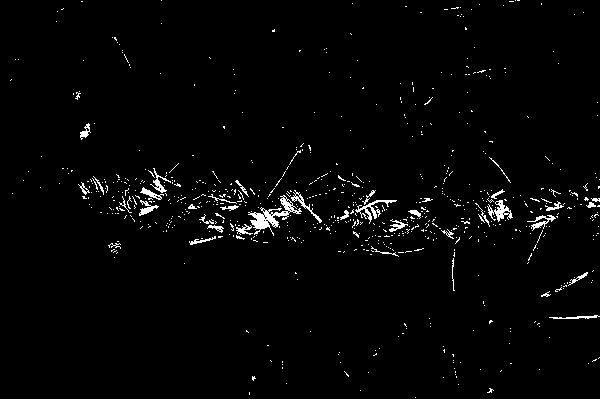Method for in-situ solidification-removal of heavy metals in soil
An in-situ solidification and heavy metal technology, applied in the field of soil remediation, can solve the problems of high purification efficiency, low cost, and long idle time of soil, and achieve the effect of broad market prospects
- Summary
- Abstract
- Description
- Claims
- Application Information
AI Technical Summary
Problems solved by technology
Method used
Image
Examples
Embodiment 1
[0016] Put the rice straw rope with a diameter of 5mm in the modified solution (the solute is chitin, the solvent is acetic acid aqueous solution with a volume concentration of 2%, and the mass concentration of chitin is 0.1%). The solid-liquid ratio of the straw rope to the modified solution is 1Kg / 10L, take it out after 1 hour of modification reaction, put it in an oven, and bake it at 80°C for 5 minutes to obtain the modified straw rope. Apply the modified straw ropes in a parallel arrangement to the soil where the heavy metal Cu exceeds the standard. The depth of the straw ropes buried in the soil surface is 10cm, the distance between the straw ropes is 10cm, and the application amount of the modified straw ropes is 300Kg / mu to control the soil quality. The water content is 20%~40%, and the soil pH value is 6~7. After 15 days, the modified straw rope is taken out from the soil to complete the in-situ solidification and removal of heavy metals in the soil. The heavy metal ad...
Embodiment 2
[0018] Put the wheat straw rope with a diameter of 25mm in the modified solution (the solute is urea, the solvent is water, the mass concentration of urea is 5%), the solid-liquid ratio of the straw rope to the modified solution is 1Kg / 10L, and the modification reaction is 2 Take it out after one hour, place it in an oven, and bake it at 100°C for 10 minutes to obtain a modified straw rope. Apply the modified straw ropes in a parallel arrangement to the soil with heavy metal Zn exceeding the standard. The depth of the straw ropes buried in the soil surface is 20cm, the distance between the straw ropes is 20cm, and the application amount of the modified straw ropes is 400Kg / mu to control the soil quality. The water content is 20%~40%, and the soil pH value is 6~7. After 45 days, the modified straw rope is taken out from the soil, and the in-situ solidification and removal of heavy metals in the soil are completed. The heavy metal adsorption capacity of the modified straw rope is...
Embodiment 3
[0020] Put a wheat straw rope with a diameter of 15mm in the modified solution (the solute is ammonia water, the solvent is water, and the ammonia mass concentration is 3%). The solid-liquid ratio of the straw rope to the modified solution is 1Kg / 10L, and the modification reaction is 1.5 Take it out after one hour, place it in an oven, and bake it at 100° C. for 5 minutes to obtain a modified straw rope. Apply the modified straw ropes in a parallel arrangement to the soil with heavy metal Pb exceeding the standard. The depth of the straw ropes buried in the soil surface is 10cm, the distance between the straw ropes is 20cm, and the application amount of the modified straw ropes is 300Kg / mu to control the soil quality. The water content is 20%~40%, and the soil pH value is 6~7. After 30 days, the modified straw rope is taken out from the soil to complete the in-situ solidification and removal of heavy metals in the soil. The heavy metal adsorption capacity of the modified straw ...
PUM
| Property | Measurement | Unit |
|---|---|---|
| Diameter | aaaaa | aaaaa |
Abstract
Description
Claims
Application Information
 Login to View More
Login to View More - R&D
- Intellectual Property
- Life Sciences
- Materials
- Tech Scout
- Unparalleled Data Quality
- Higher Quality Content
- 60% Fewer Hallucinations
Browse by: Latest US Patents, China's latest patents, Technical Efficacy Thesaurus, Application Domain, Technology Topic, Popular Technical Reports.
© 2025 PatSnap. All rights reserved.Legal|Privacy policy|Modern Slavery Act Transparency Statement|Sitemap|About US| Contact US: help@patsnap.com

